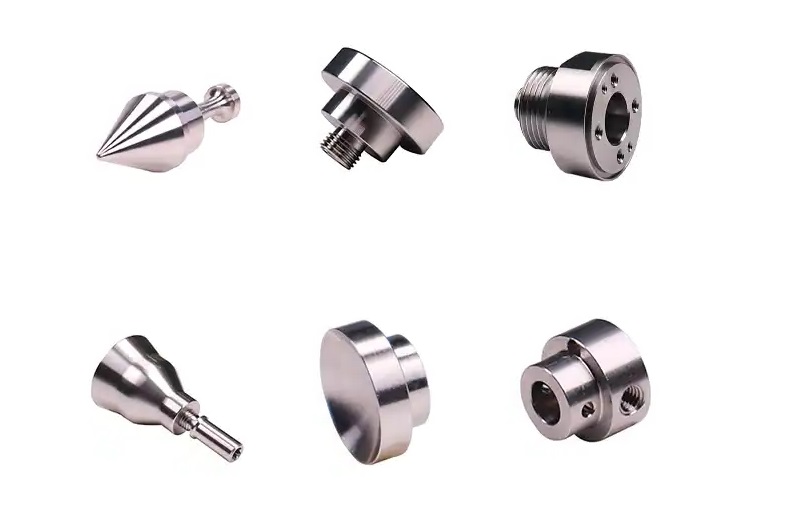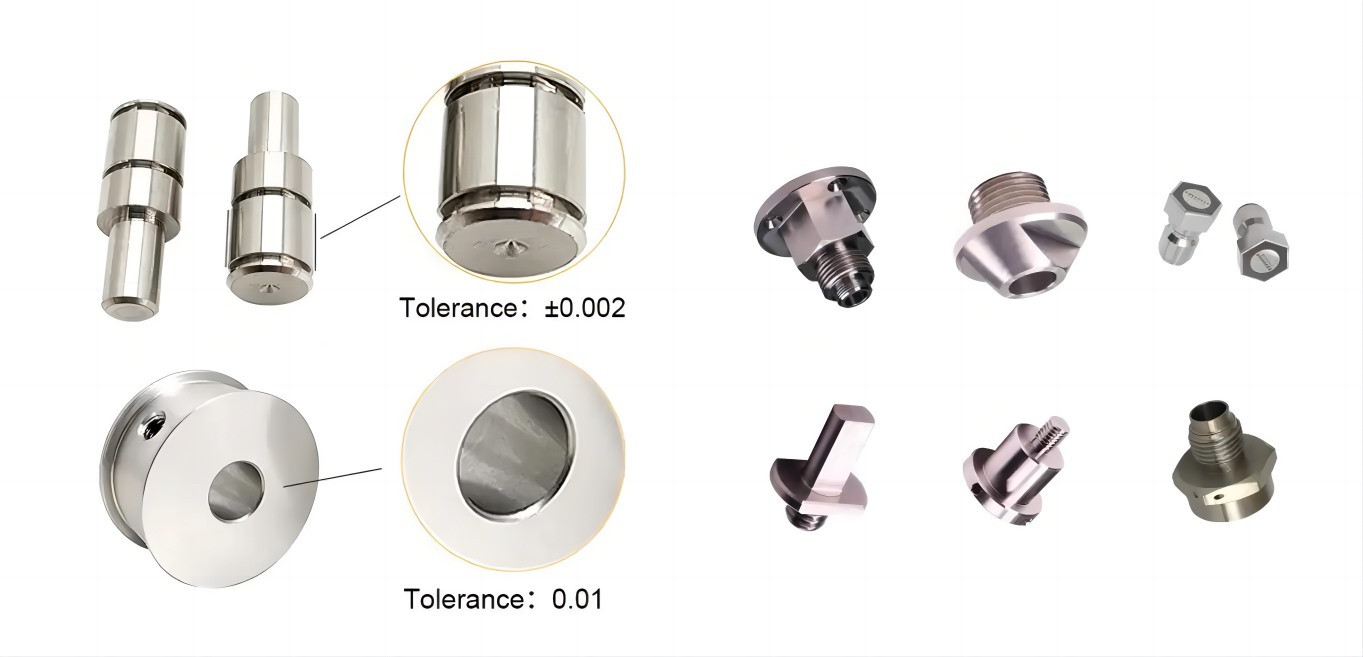Difference Between 303 and 304 Stainless: Which is Better?
 Nov 30,2023
Nov 30,2023

Stainless steel is famous for its excellent properties and high corrosion properties. These properties have divided the steel into different categories and grades. These properties vary grade to grade depending on the compositions. Here our focus would be stainless steel 303 and 304. We will discuss why these are famous grades. What are the differences in properties in these grades and what are the applications of these grades. This information will be helpful in deciding in choosing the stainless-steel grade for a project with specific applications.
What is 303 Stainless Steel
material 303 stainless steel is an austenitic grade stainless steel with exceptional machining properties. It contains 18% Cr and 8% Ni as main chemical elements. Additionally, the presence of sulfur makes it a machinable alloy along with moderate corrosion resistance properties. As the sulfur influences corrosion properties but this alloy has major application where high machinability is required.

Is 303 stainless steel austenitic?
Yes, material 303 stainless steel. It has low thermal conductivity and low electrical conductivity.
Density of 303 Stainless Steel
The density of 303 Stainless Steel is 0.29Ibm/in3 at 68ᵒF.
303 stainless yield strength
The 0.2%offst Yield strength of material 303 stainless steel is 30ksi(min) and tensile strength is 75ksi(min).
Is 303 stainless steel magnetic?
No, material 303 stainless steel is non-magnetic austenitic alloy and cannot be hardened by heat treatment. However, in some cases, it can be made to attract the magnet to a certain level depending on the various factors for specific applications.
What Gauge is 304 Stainless Steel?
304 is the standard 18/8 steel grade. It has versatile properties as compared to other grades. It is one of the commonly used alloys even though many alternatives of these grades are present. It has exceptional formability and weldability. Corrosion resistance is also better than other alloys and lower carbon level makes it suitable for many construction applications. Ni content is higher in 304 which is around 8-10% and Cr is about 18-20% in the composition.

Is 304 austenitic stainless steel?
304 stainless steel is normally categorized as austenitic grade. It is due to high Ni and Cr content which is 8% and 18% and classified as 18/8 grade.
Is 304 stainless steel food grades?
Yes, 304 is a food grade alloy. Normally the food grade alloys are 300 and 400. 304 falls in this category and used widely because it has high corrosion resistance and easily be sanitized. It is cost effective option for the food processing industry.
Is 304 stainless steel good?
Yes, 304 is a good grade as it has good corrosion properties, forming properties and has high strength. It is also easy to maintain in the food processing industry and other applications. Milling 304 stainless steel has high strength.
What is the density of stainless steel 304?
304 grades have density of 7930 kg/m3
304 stainless steel yield strength
The yield strength of 304 at 0.2%offset is 30ksi and has tensile strength of 75ksi. Milling 304 stainless steel gives good results
Is 304 stainless steel magnetic?
No, 304 grades are not magnetic. It has iron in its composition but are non-ferromagnetic and austenitic. It can become magnetic by applying heat treatment and work hardening treatment which can create ferrites in its microstructure.
Difference Between 303 and 304 Stainless Steel
material 303 stainless steel and 304 are common grades of stainless steel and are different with the presence of sulfur in 303 grade composition while 304 has no sulfur. This can create many differences in their composition, microstructures and properties. These differences are explained below:
303 Stainless Steel Composition
|
Elements in 303 grade |
Percentage |
|
Chromium |
17-19% |
|
Nickle |
8-10% |
|
Carbon |
0.15% |
|
Silicon |
1% |
|
Manganese |
2% |
|
Phosphorus |
0.2% |
|
Sulfur |
0.15% |
|
Molybdenum |
0.75% |
303 stainless properties
|
Mechanical properties of 303 |
Values |
|
Tensile strength |
75ksi |
|
Yield strength at 0.2%offset |
30ksi |
|
Elongation % |
35mm |
|
hardness |
228HB |
|
physical properties of 303 |
Values |
|
Density |
0.29Ibm/in3 |
|
Thermal expansion coefficient |
9.2(min/in)ᵒF |
|
Electrical resistivity |
28.3(mW-in) |
Machining
material 303 stainless steel has high machinability. However, this decreases the corrosion resistance of the alloy. It can easily undergo pitting corrosion in the chlorine-based environment. Toughness is also compromised in 303 because of low corrosion resistance.
Weldability
This alloy is nonweldable as compared to 304.as it is a free cutting alloy which creates high machining properties but less welding properties.
Corrosion resistance
303 has less corrosion properties as compared to 304. Sulfur presence decreases the corrosion resistance in the alloy.
Fabrication
Fabrication of 303 is better than 304. 304 rapidly undergoes work hardening which comprises its fabrication, machining, and other properties.
Strength and durability
303 has good durability and strength because of high machinability. But 304 is better for many applications where high strength is required
Cost
The chemical composition contains a unique combination of elements which makes it a bit more expensive than 304.
What is the chemical composition of 304 stainless steel?
|
Elements in 304 grade |
Percentage |
|
Chromium |
17.5-19.5% |
|
Nickle |
8-10.5% |
|
Carbon |
0.05% |
|
Silicon |
1% |
|
Manganese |
2% |
|
Phosphorus |
0.02% |
|
Sulfur |
0.03% |
|
Nitrogen |
0.07% |
304 stainless properties
Discover the remarkable properties of 304 stainless steel and let it empower your projects. With its exceptional corrosion resistance, high temperature strength, and remarkable formability, 304 stainless steel becomes your ultimate solution. Whether you're in the automotive, food processing, or construction industry, this versatile material guarantees durability, easy maintenance, and a touch of elegance. Embrace the power of 304 stainless steel and unlock its full potential for your endeavors.
|
Mechanical properties of 304 |
Values |
|
Tensile strength |
500-700MPa |
|
Proof strength |
190Mpa |
|
Elongation % |
45%min |
|
hardness |
215HB |
|
physical properties of 303 |
Values |
|
Density |
8g/cm3 |
|
Thermal expansion coefficient |
17.2W/m.K |
|
Electrical resistivity |
0.72x10-6ohm.m |
|
Melting point |
1450℃ |
Corrosion Resistance
304 has better corrosion properties. It serves as a good corrosion resistant material in the presence of various corrosive solutions. But, pitting and crevice resistance is less in the chloride-based environments. Stress corrosion can also take place at 60℃
Heat Resistance
Oxidation and heat resistance are good in 304. In temperatures 870°C -925°C, it performs best. At higher temperatures like 425-860°C, 304 loses its heat resistance and also a chance of carbide precipitation. In the applications of high strength at temperatures up to 800°C, 304 is not recommended.
Fabrication
Milling 304 stainless steel gives good results. it is recommended to use stainless steel tools for fabrication.
Cold Working
304 has high work hardening. When milling 304 stainless steel is required, an intermediate annealing is required to eliminate work hardening. It also avoids tears and cracks in 304. Also, Full annealing is required when cold working is done, this will reduce thermal stresses and increase corrosion resistance.
Hot Working
Hot working like forging must be done at temperatures 1149 to 1260°C. After hot working, it is required to rapidly cool down the part to increase the corrosion resistance in 304 stainless steels.
Heat Treatment
Heat treatment of 304 is difficult as it cannot be hardened by heat treatments. Annealing can be carried out by rapidly cooling the part from 1120°C.
What is 303 stainless steels used for?
Material 303 stainless steel has applications related to heavy machinery parts because it can make small and delicate parts efficiently. Other applications are bushings, in electrical parts making, for screws, nuts and bolt making. Aircrafts fitting and gears are also made by 303 grades because of their good mechanical properties.
304 Stainless Steel Uses
304 grades have high corrosion resistance, and it is aesthetically pleasant therefore it has many applications. It is used in aerospace parts and architectural parts. It is used in the automotive industry and in chemical industries for making containers. It is also a construction material because of good mechanical properties and corrosion properties. It is used in food industries for liquid processing equipment, in heat exchangers. It is aesthetically pleasant so ideal for making kitchen appliances, surfaces and making utensils because it is easy to clean and non-sticky.
303 vs 304 Stainless Steel Machinability
Machining 304 stainless steels and machining 303 stainless steels results are comparable due to slight difference in composition. Both machinability properties are discussed below:
Machining 304 stainless steel
Machining 304 stainless steel has good results. When machining 304 stainless steel, it is recommended to cut the edges sharp because dull edge can increase the work hardening of alloy. The machinability rating of 304 grade is 48% because it undergoes work hardening quickly which makes the machining hard to conduct.
303 stainless steel machinability
Machining 303 stainless steel is done rapidly in all the austenitic alloys. This machining 303 stainless steel is because of presence of sulfur in composition. Sulfur increases the machinability and decreases the toughness and corrosion properties. But 303 is mostly used in applications where machinability is priority. The rating of machinability of 303 grade is 75%.
When comparing the machining 303 stainless steel and machining 304 stainless steels, then 303 is recommended to use. 303 is a free cutting alloy and best in austenitic grades in machining 304 has lower machinability as it is not a free-cutting alloy. It is weldable and has no hardening upon heat treatment. Therefore, not suitable for machining.
Which is Better 303 or 304 Stainless Steel?
Depending on the application, both grades have their own unique properties. Machining 303 stainless steels is ideal as it is the best material in austenitic grade due to sulfur in composition. 304 is good for welding while 303 is non-weldable. 304 has no hardening upon heat treatment so not suitable for hardening application. 304 is a good construction material and also used in kitchen appliances.
For machining, 303 stainless steel is better than 304. The mechanical properties of 304 are better than 303. It has high chromium in composition which gives better corrosion properties and tensile strength while 303 has low strength.
Try Tuofa Now!
Send drawings to info@tuofa-cncmachining.com
Tuofa Engineer Support Team
Real human quotes are more accurate than software quotes
303 SS vs 304 SS: Pros and Cons
303 Stainless Steels Pros:
- Machining 303 stainless steels is best for machinability applications as sulfur in its composition improves its machinability.
- It is ideal for making complex geometries and shapes. It can easily undergo machining operation for heavy duty parts.
- It is good for food, pharmaceutical and marine industries due to good mechanical properties.
- It is non-magnetic so it is used at places where magnetism is concerned.
- The durability of 303 is good as it can be shaped into any geometry easily.
303 Stainless Steels Cons
- The cost of 303 is higher as it has unique chemical composition which makes it slightly more expensive than other alloys in this family of stainless steel like 304.
- Corrosion properties are not so high as compared to other stainless steel like 304.
304 Stainless Steels Pros
- Corrosion resistance of 304 is higher than 303 because it has slightly higher chromium content in composition which creates stronger corrosion protective layer on its surface.
- It is non-magnetic so suitable for the areas where magnetism is not required.
- It is easy to clean and non-sticky so ideal for making kitchen appliances, utensils and other kitchen items.
- It has higher strength than 303 grade. The resistance to heat and cold is higher which is good for many outdoor applications.
- It is a good option for food processing and pharmaceutical industries because of easy to clean nature.
- It is also a better construction and transportation material as compared to 303 grades.
304 Stainless Steels Cons
- It is highly susceptible to stress corrosion cracking. In the presence of toxic chemicals and environments, it can easily undergo corrosion and create damage to components.
- It becomes costly in some applications because some applications require higher nickel content for better corrosion and thermal resistance which makes it bit expensive.
- Welding is difficult in 304 grades as it has high hardness.
- Machining 304 stainless steels results are not so good as compared to 303 because of work hardening.
Why Choose China Tuofa to Custom Machining Stainless Steel Parts?
At Shenzhen Tuofa, we take great pride in offering top-notch customized services for machined common stainless steel grades are 303 304 316 420 430. Depending on specific application requirements, there are other different grades of stainless steel available for you to choose from. When you choose us, you can trust that you'll receive exceptional quality and precision in every component we produce.
Our team of skilled professionals is dedicated to delivering stainless steel parts that meet your exact specifications. With our advanced CNC machining technology and state-of-the-art equipment, we ensure that every part is machined with utmost precision and attention to detail.
You can rely on our expertise and experience in machining stainless steel parts. We have a proven track record of delivering high-quality products to satisfied customers in various industries. By visiting our website, tuofa-cncmachining.com, you can learn more about our services, capabilities, and previous projects, gaining confidence in our ability to meet your unique requirements.
Choose Shenzhen Tuofa for customized machined 303 and 304 stainless steel parts that will exceed your expectations. Trust in our expertise and let us deliver the precision and quality you deserve for your projects. Contact us today and experience the excellence of our customized services.
FAQs
Free machining stainless steel
For free machining applications, 303 is a better choice. As it is good for precision machining applications.
Can you MIG weld 304 stainless steels?
Yes, MIG welding can be done in 304 stainless steels. It is recommended to use Teflon wire liner. This is a good option as wire feed and helps in avoiding wire contamination.
Can you weld 303 stainless steels?
303 stainless steel is difficult to weld as it has high sulfur. For better welding results of 303, it is recombed to use filler rods or electrodes of 308 and 309 steel grades. Annealing of weld must be carried out to increase corrosion resistance.
 Tel/WeChat:
Tel/WeChat:  Email:
Email: 
 Home
Home

 18-8 Stainless Steel vs 303: The Comparison Guide
18-8 Stainless Steel vs 303: The Comparison Guide 







